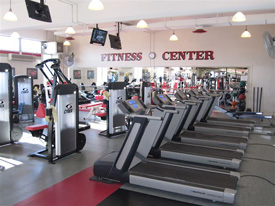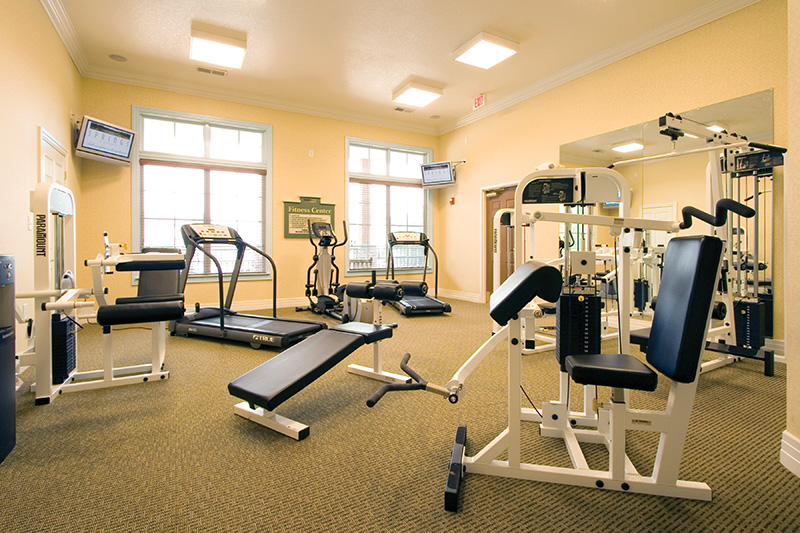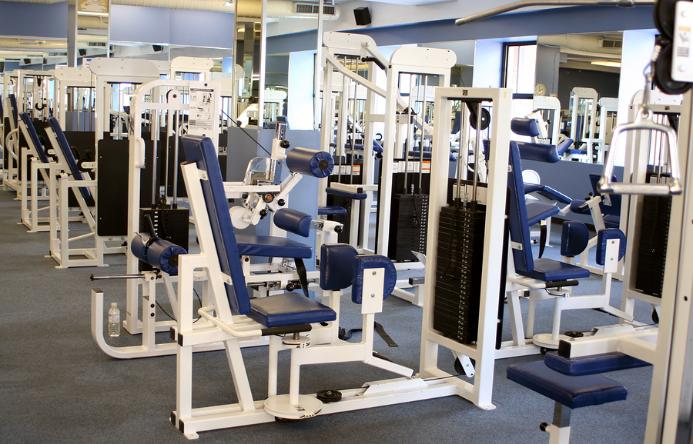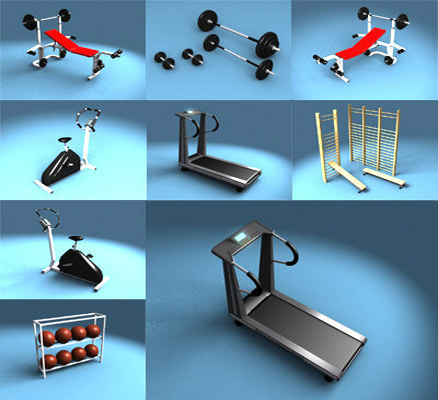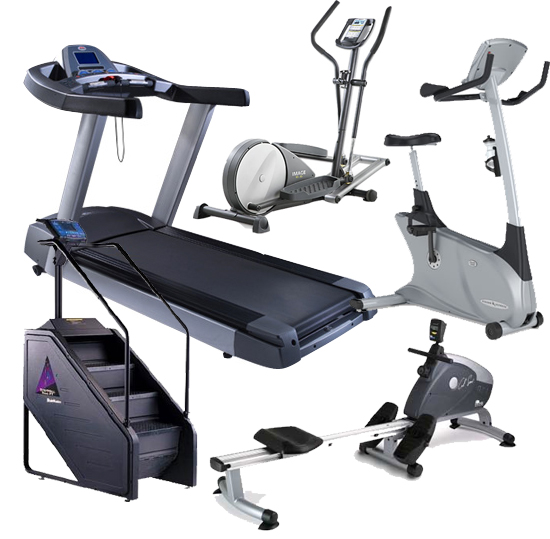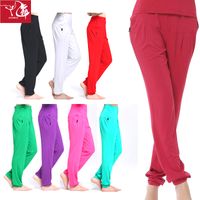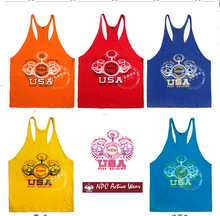Source:- Google.com.pk
A Fitness Center is a place which houses exercise equipment for the purpose of physical exercise.
Main workout area
Most health clubs have a main workout area, which primarily consists of free weights including dumbbells, barbells and exercise machines. This area often includes mirrors so that exercisers can monitor and maintain correct posture during their workout.
A gym which predominately or exclusively consists of free weights (dumbbells and barbells), as opposed to exercise machines, is sometimes referred to as a black-iron gym, after the traditional color of weight plates.
Cardio area/Theatr
A cardio theatre including treadmills, stationary bikes and TV displays
A cardio theater or cardio area includes many types of cardiovascular training-related equipment such as rowing machines, stationary exercise bikes, elliptical trainers and treadmills. These areas often include a number of audio-visual displays (either integrated into the equipment, or placed on walls around the area itself) in order to keep exercisers entertained during long cardio workout sessions.
Group exercise classes
Spin-cycle group exercise class
Most newer health clubs offer group exercise classes that are conducted by certified fitness instructors. Many types of group exercise classes exist, but generally these include classes based on aerobics, cycling (spin cycle), boxing or martial arts, high intensity training, step, regular and hot (Bikram) yoga, pilates, muscle training, and self-defense classes such as Krav Maga and Brazilian jiu-jitsu. Health clubs with swimming pools often offer aqua aerobics classes. The instructors often must gain certification in order to teach these classes and ensure participant safety.
Sports facilities
See also: Sports club
Some health clubs offer sports facilities such as a swimming pools, squash courts or boxing areas. In some cases, additional fees are charged for the use of these facilities
Personal training
Personal training at a gym.
Most health clubs employ personal trainers who are accessible to members for training/fitness/nutrition/health advice and consultation. Personal trainers can devise a customized fitness routine, sometimes including a nutrition plan, to help clients achieve their goals. They can also monitor and train with members. More often than not, access to personal trainers involves an additional hourly fee.
Other services
Newer health clubs generally include health-shops, snack bars, restaurants, child-care facilities, member lounges and cafes. It is not unusual for a sauna, steam shower, or wellness areas to be present. Health clubs generally charge a fee to allow visitors to use the equipment, courses, and other provided services. A fairly new trend is the advent of eco friendly health clubs which incorporate principles of "green living" in its fitness regimen.
Levels of services and offerings
Health clubs offer many services, and as a result the monthly membership prices can vary greatly. A recent study of American clubs found that the monthly cost of membership ranged from US$15 per month at basic chain clubs that offer limited amenities to over US$200 per month at spa-oriented clubs that cater to families and to those seeking social activities in addition to a workout .[citation needed] In addition, some clubs - such as many local YMCAs - offer per-use punchcards or one-time fees for those seeking to use the club on an as-needed basis.
Costs can vary through the purchase of a higher-level membership, such as a Founders or a Life membership. Such memberships often have a high up-front cost but a lower monthly rate, making them potentially beneficial to those who use the club frequently and hold their memberships for years.
History
An early public gymnasium started in Paris (France) in 1847.But Scott Roberts traces the history of health clubs for the general public to 1947 in Santa Monica, California.Physical exercise is any bodily activity that enhances or maintains physical fitness and overall health and wellness. It is performed for various reasons including strengthening muscles and the cardiovascular system, honing athletic skills, weight loss or maintenance, as well as for the purpose of enjoyment. Frequent and regular physical exercise boosts the immune system, and helps prevent the "diseases of affluence" such as heart disease, cardiovascular disease, Type 2 diabetes and obesity It also improves mental health, helps prevent depression, helps to promote or maintain positive self-esteem, and can even augment an individual's sex appeal or body image, which is also found to be linked with higher levels of self-esteem Childhood obesity is a growing global concer and physical exercise may help decrease some of the effects of childhood and adult obesity. Health care providers often call exercise the "miracle" or "wonder" drug—alluding to the wide variety of proven benefits that it provides.
Fitness Centers Fitness Exercise for Women for Men for Women at Home for Men at Home Abs For Kids for Women to Lose Weight Tumblr Photos
Fitness Centers Fitness Exercise for Women for Men for Women at Home for Men at Home Abs For Kids for Women to Lose Weight Tumblr Photos
Fitness Centers Fitness Exercise for Women for Men for Women at Home for Men at Home Abs For Kids for Women to Lose Weight Tumblr Photos
Fitness Centers Fitness Exercise for Women for Men for Women at Home for Men at Home Abs For Kids for Women to Lose Weight Tumblr Photos
Fitness Centers Fitness Exercise for Women for Men for Women at Home for Men at Home Abs For Kids for Women to Lose Weight Tumblr Photos
Fitness Centers Fitness Exercise for Women for Men for Women at Home for Men at Home Abs For Kids for Women to Lose Weight Tumblr Photos
Fitness Centers Fitness Exercise for Women for Men for Women at Home for Men at Home Abs For Kids for Women to Lose Weight Tumblr Photos
Fitness Centers Fitness Exercise for Women for Men for Women at Home for Men at Home Abs For Kids for Women to Lose Weight Tumblr Photos
Fitness Centers Fitness Exercise for Women for Men for Women at Home for Men at Home Abs For Kids for Women to Lose Weight Tumblr Photos
Fitness Centers Fitness Exercise for Women for Men for Women at Home for Men at Home Abs For Kids for Women to Lose Weight Tumblr Photos
Fitness Centers Fitness Exercise for Women for Men for Women at Home for Men at Home Abs For Kids for Women to Lose Weight Tumblr Photos
